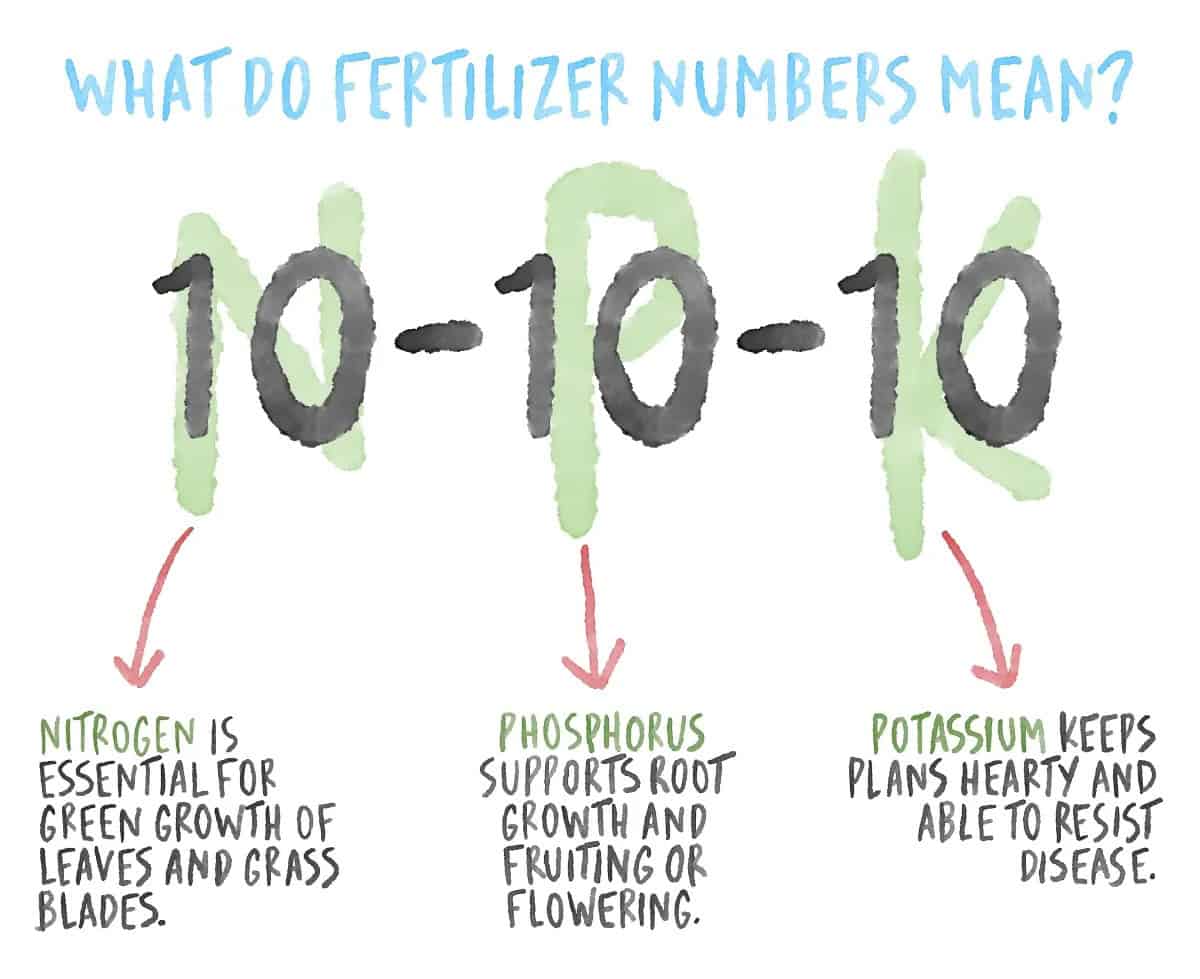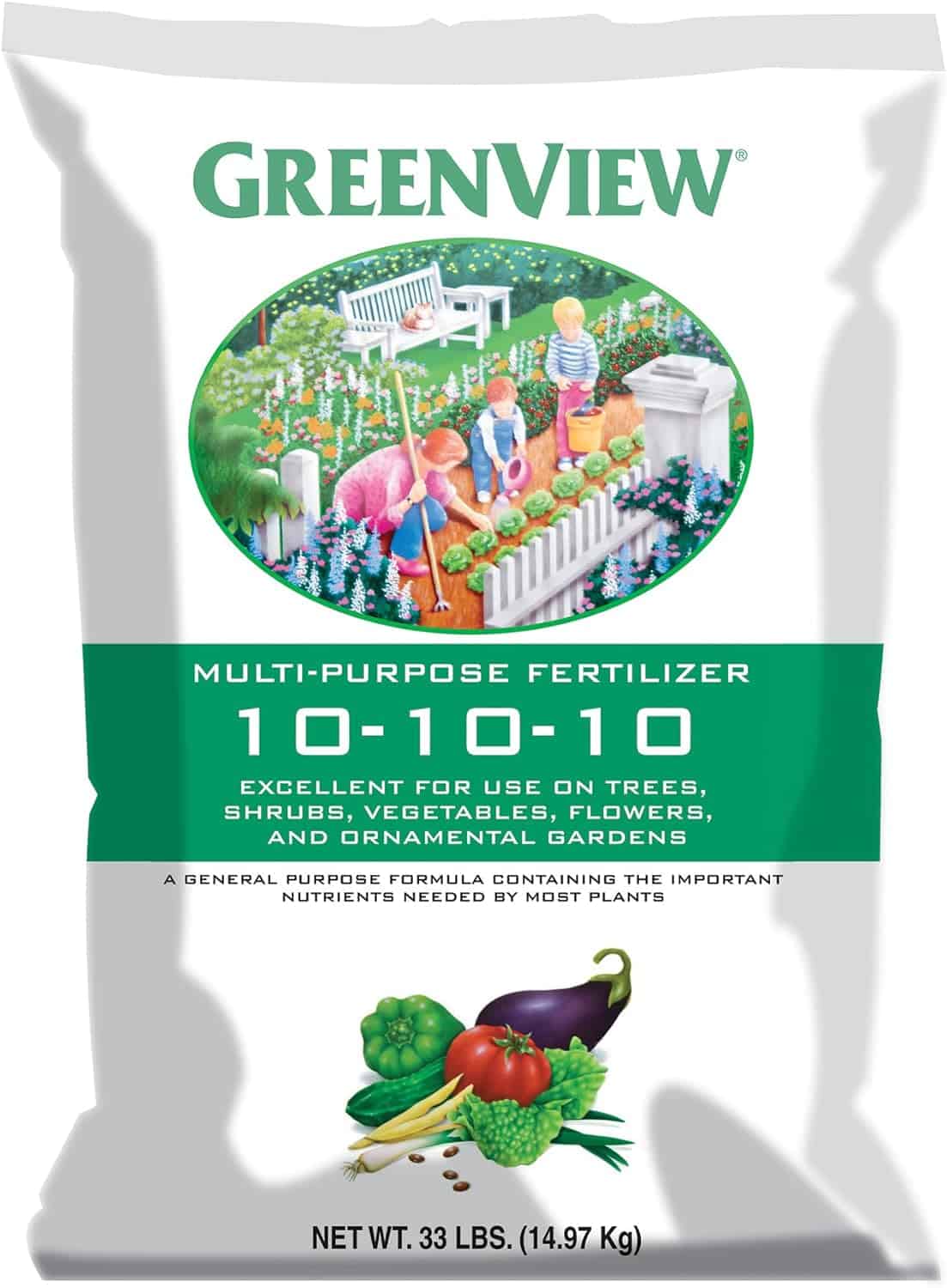Garden centers and nurseries are fascinating places whether you have experience with gardening or otherwise. However, despite experience, plant nurseries can be huge and enough to make your head spin when looking for fertilizer options.
What exactly is in all those fertilizer bags and bottles? What do the numbers on the fertilizer packages mean? Is it that important for you to pick the correct one for your garden? Here, we present fertilizer numbers explained.
Let’s look at plant fertilizer numbers and how they can help you create the best garden you’ve ever had.
Where to find fertilizer numbers
Spend some time reading the fertilizer labels when you’re out buying. Understanding the fertilizer numbers (usually found on the front of the package) and the materials used to create the fertilizer is critical.
You will find that fertilizer has conspicuous markings, which occur in a sequence of numbers on every bag of fertilizer.
For example, they’ll be 3:1:5, 10:10:10, or 6:5:1, and they’ll reflect the three main compounds found in each pack.
The chemistry behind fertilizer can be confusing to novices. Even gardeners with experience may find it frustrating to choose the correct fertilizer for a specific need.
You’ll often see gardeners wandering from one product to the next, attempting to interpret the label and the numbers, befuddled by symbols they barely remember from high school science classes.
“Up, down all around. That’s when Ray’s little pearl falls from my lips”.
This simple phrase is a quick and easy method to remember the primary nutrients your plants need to thrive:
- Nitrogen (N) for vegetative growth like grass, plants, or leaves (Up).
- Phosphorus (P) for root growth (Down).
- Potassium (K) for everything else (All Around).
What do the numbers represent?
The three fertilizer numbers on the label of every bagged or bottled fertilizer show the N-P-K ratio.
The N stands for nitrogen, the P for phosphorous, and the K for potassium in a specific balance.
These fertilizer numbers represent the percentage of the three macronutrients found in that package. Plants use several nutrients to fuel their growth, but the N-P-K ratio is the most crucial.
A pack of fertilizer with the fertilizer numbers 10-5-10 on the label, for example, contains 10% N, 5% P, and 10% K. The remaining 75% of the carrier product makes up the bag’s weight.
The initials SR after the numbers stand for Slow Release. Instead of being immediately available to the plant (and perhaps harming it), the fertilizer is released regularly over time.
A slow-release fertilizer reduces the need to reapply it. You can also use this fertilizer on a more regular basis.
The three significant macronutrients above are just the beginning.
Plants also require other nutrients to thrive. These nutrients are known as micronutrients. Magnesium, calcium, and iron are other essential nutrients for garden health, and a lack of these might cause plant weakness.
Putting your soil through a test is the only way to know what your soil contains or does not include precisely. However, if you examine your plants more closely, you may be able to detect some shortcomings on your own.
Fertilizer Numbers Explained – First Number
The first number you will find on your fertilizer pack is nitrogen which is frequently considered one of the most vital nutrients to promote plant growth. It is a nutrient that makes up a portion of the chlorophyll molecule.
It gives plants their green hue and aids in photosynthesis. On the other hand, plants that don’t have enough nitrogen become yellow.
Organic nitrogen molecules, ammonium (NH4) ions, and nitrate (NO3) ions are the three primary types of nitrogen in the soil.
The majority of nitrogen in the soil is in organic forms. Animal waste, stable soil organic materials, or living organisms could be examples, such as microbes. Plants are not able to directly use this form of nitrogen, but bacteria can convert it to a state that plants can absorb.
The two inorganic forms of nitrogen, ammonium and nitrate, account for the most accessible nitrogen.
Throughout their lives, most plants continuously acquire nitrogen from the earth (through their roots). As a result, a plant’s nitrogen requirements naturally rise as it grows in size.
Plants that receive enough nitrogen grow big, green leaves. If there isn’t enough nitrogen, the leaves will be stunted and have a pale green or yellow color.
On the other hand, excess nitrogen causes them to develop more quickly than they should, resulting in feeble plants. Further, providing too much nitrogen to flowering plants can result in abundant foliage and not enough flowers.
Fertilizer Numbers Explained – Second Number
The second number you will find on your fertilizer pack refers to the phosphorus content. Phosphorus is responsible for various processes, the primary one being to promote root growth.
Even though they hide beneath the ground’s surface, a plant’s roots are its vital force.
The plant will collect more nutrients and water with more unique root systems, which rely on absorbing sufficient quantities of phosphorus.
Phosphorus also influences and aids plant development, but it is also responsible for plant maturity. A plant’s fruit or seeds will be of poor quality if it doesn’t get enough phosphorus.
Phosphorus deficiency may also be challenging to detect. However, you may discover that a plant is not growing to its full potential or is maturing slowly, resulting from a lack of this element.
Fertilizer Numbers Explained – Third Number
Lastly, the third number you will find on the fertilizer pack indicates the potassium content. Potassium is the second most important nutrient after nitrogen. It has to do with the flow of water, nutrients, and carbohydrates into the tissue of a plant.
Plants usually receive potassium in the form of potassium ion (K), and it serves various functions.
It is crucial to the physiological processes of a plant. For example, it is essential in controlling a plant’s stomata and, as a result, carbon dioxide uptake and photosynthesis.
Potassium can also help with ATP production, which supplies energy to the plant for various physiological functions. As a result, potassium raises a plant’s protein content while improving drought resilience and reducing water loss.
A potassium deficit can also cause wilting and yellowing of the leaves. Too much potassium, on the other hand, usually has no negative consequences for the plant.
It can, however, cause antagonism and deficiency in other nutrients like magnesium and calcium.
Why do they matter?

Each of these three nutrients in the N-P-K system has a distinct function. For example, nitrogen (N) promotes robust and leafy growth and a deep green hue in lawn grasses and other plants.
Growth slows, and lawns and plants look pale when there isn’t enough nitrogen.
Conversely, an overabundance of nitrogen causes blooming and fruit-bearing plants to focus their resources on green development, sacrificing their blossoms and fruit.
Phosphorus (P) helps plants utilize other nutrients efficiently while focusing energy on vigorous root development and blooms, fruits, and seeds. Conversely, phosphorus deficiency causes weak roots, as well as a lack of flowers and fruit.
Due to environmental concerns over phosphorus runoff into waterways, a growing number of states and counties are restricting the use of phosphorus for lawns.
If a soil test indicates a nutrient deficiency in these states or counties, homeowners can usually apply a high-phosphorus lawn beginning fertilizer, such as Pennington UltraGreen Starter Fertilizer 22-23-4.
You should check any fertilizer application limits with your local county extension agent.
Potassium (K) aids overall growth. It keeps plants healthy and balanced by regulating root and top growth.
This control impacts many lawn and garden health elements, from disease and insect resistance to cold and drought tolerance.
Is there a magic combination?
The combinations of these fertilizer numbers are not magical! It depends on what you are growing, so you can find fertilizers with those specific ratios on the fertilizer pack to achieve the best outcome.
Beautiful turf requires enough nitrogen for rapid development and deep color, so lawn fertilizers also have an N-P-K ratio.
The first number is significantly more significant than the other two. Because most of the phosphate and potassium that healthy grass needs come from the soil, the levels for those nutrients are low.
Tomatoes and other crops require nitrogen, but flowering and abundant harvests necessitate higher phosphorus and potassium levels. As a result, with items like Lilly Miller, the second and third figures are the highest. 5-10-10 MORCROP Tomato & Vegetable Food.
Flowering bulbs require phosphorus for healthy roots, so bulb fertilizers with a high middle number, such as Lilly Miller Bone Meal 6-12-0, have a high phosphorus content.
For example, Lilly Miller All Purpose Planting and Growing Food 10-10-10 is a versatile fertilizer that provides a balanced N-P-K for overall garden health.
You can purchase the correct fertilizer products for your lawn and garden goals with the confidence to grasp the basics underlying fertilizer labeling.
Pennington’s lawn and garden fertilizers can help you achieve your lawn and garden goals and achieve full beauty and enjoyment levels.
Fertilizer Numbers Explained – Conclusion
The constituents of N-P-K are essential as you might end up doing more damage than good if you choose the wrong nutrient ratios.
The nutrient requirements of each plant are different. Some require a more balanced nutritional profile, while others demand more nitrogen. Applying a nitrogen-rich fertilizer to certain plants may cause them to focus more energy on growing foliage rather than blooming flowers.
Now that you understand more about fertilizer numbers and how they work, you can choose the right fertilizer for your plants.
If you still have trouble working things out, consult one of your local store assistants to guide your purchases.
Resources:

